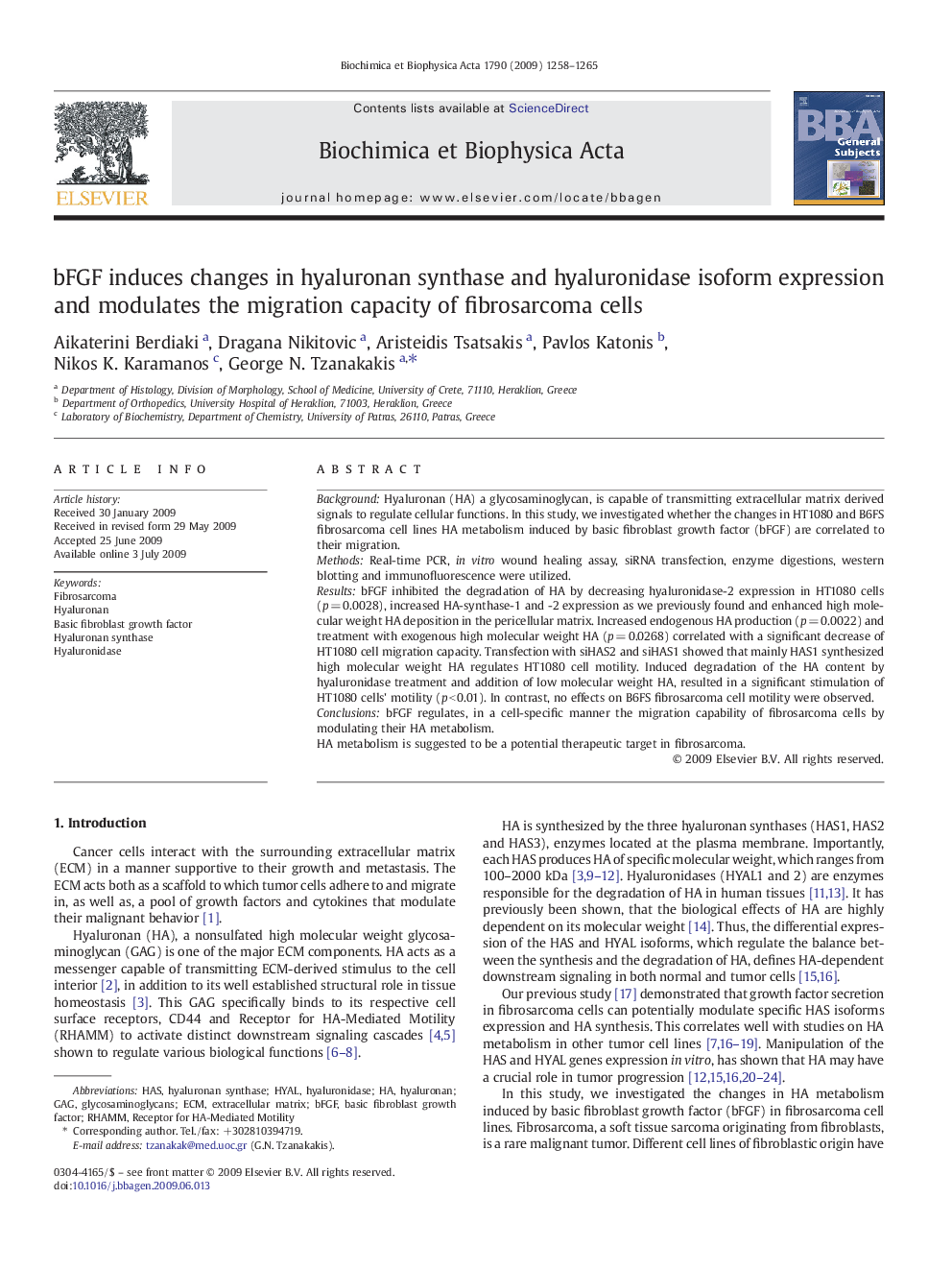| کد مقاله | کد نشریه | سال انتشار | مقاله انگلیسی | نسخه تمام متن |
|---|---|---|---|---|
| 1948097 | 1054674 | 2009 | 8 صفحه PDF | دانلود رایگان |

BackgroundHyaluronan (HA) a glycosaminoglycan, is capable of transmitting extracellular matrix derived signals to regulate cellular functions. In this study, we investigated whether the changes in HT1080 and B6FS fibrosarcoma cell lines HA metabolism induced by basic fibroblast growth factor (bFGF) are correlated to their migration.MethodsReal-time PCR, in vitro wound healing assay, siRNA transfection, enzyme digestions, western blotting and immunofluorescence were utilized.ResultsbFGF inhibited the degradation of HA by decreasing hyaluronidase-2 expression in HT1080 cells (p = 0.0028), increased HA-synthase-1 and -2 expression as we previously found and enhanced high molecular weight HA deposition in the pericellular matrix. Increased endogenous HA production (p = 0.0022) and treatment with exogenous high molecular weight HA (p = 0.0268) correlated with a significant decrease of HT1080 cell migration capacity. Transfection with siHAS2 and siHAS1 showed that mainly HAS1 synthesized high molecular weight HA regulates HT1080 cell motility. Induced degradation of the HA content by hyaluronidase treatment and addition of low molecular weight HA, resulted in a significant stimulation of HT1080 cells' motility (p < 0.01). In contrast, no effects on B6FS fibrosarcoma cell motility were observed.ConclusionsbFGF regulates, in a cell-specific manner the migration capability of fibrosarcoma cells by modulating their HA metabolism.HA metabolism is suggested to be a potential therapeutic target in fibrosarcoma.
Journal: Biochimica et Biophysica Acta (BBA) - General Subjects - Volume 1790, Issue 10, October 2009, Pages 1258–1265